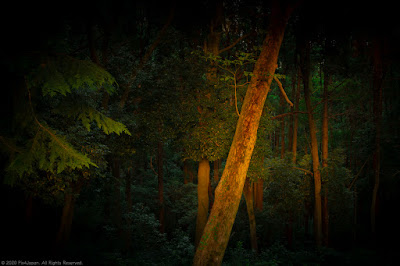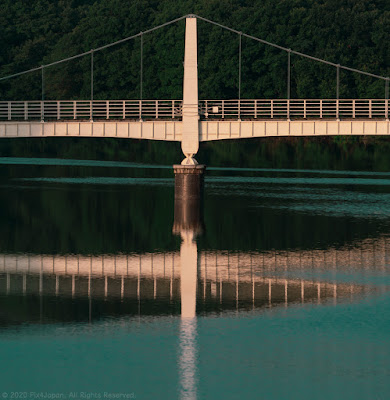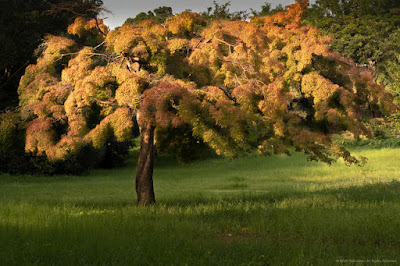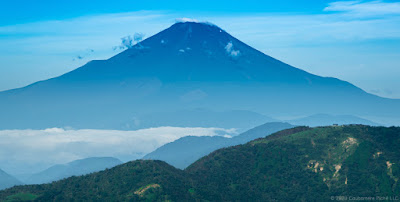Cape Arasaki sits the the lower 1/3 of the Miura Peninsula on the west coast facing Sagami Bay. This location in particular is perfect for catching a beautiful seascape with Mt. Fuji rising high above in the west if you are lucky enough to have a day of clear weather and zero haze on the water's horizon.
The cape consists of several attractions both on the coastline and further inland but nearby:
- Arasaki Park
- Seaside Hiking Trail: This is less of a hiking trail and more of a walking trail. Parts of the trail use concrete bridges and railings. Other parts, however, require that you crawl over slipper sandstone. Would recommend good fitting shoes or boots. Probably best if you avoid loose sandals or flip flops to avoid slipping and causing injury to yourself.
- Picnic grounds: There are a few picnic tables spread out over a grassy area under some trees. There is enough space where you can throw down a picnic blanket if the tables are already taken.
- Parking: I arrived on a weekday so the parking was free. There is a flat fee of 1,000 yen for the whole day (8:00 a.m. to 7:30 p.m.) if you arrive early enough to beat the crowds. I arrived at 5:30 a.m. and already there were people lining up in their cars.
- Public transportation: The park is still accessible by train and bus if you want to avoid dealing with traffic. Visit a blog post by redeyebluez for excellent info on how to access the park by bus and train with tips on discounted fares.
- Nagai Seaside Park Soleil Hill
- I didn't visit this this family oriented activity park/attraction but it is heavily promoted as a great place for family outings (unless you have teenagers in which case they would probably be bored out of their noggins. If you look at the park from above using Google Maps or Google Earth, you can clearly see the outline of what used to be an air base for the Imperial Japanese Navy. After the war, the base was converted to residential facility for the U.S. military and later a radio facility for use by the Japan Self Defense Forces. In 2005, the land was given to the city for development as a park. The air strip is not a long parking lot and towards the north is a training facility that is still used by the Japanese Air Self Defense Force (JASDF). I read posts online of sailors and soldiers who lived on this base back in the 50s. They said that the air strip was converted into "main street" for their little "American" home away from home.
Seascape Photography:
Pine Trees on Outcrop
Cape Arasaki has a small outcrop of rock with just enough soil to keep four trees alive. Despite using a 10-stop ND filter and fast shutter speed, this shot was barely salvaged in post processing. Definitely not a keeper.🤨
Pentax KP 31 mm ISO 100 for 1/640 sec. at ƒ/10
Now that I have become somewhat familiar with this area, I will come back in the future to take much better shots. For example, the above shot of the the outcrop (荒崎弁天島: Arasaki Bentenjima) should be taken when the sun is setting in the west, or very early in the morning during blue hour before the sun rises.
Concrete Column on Coast
A lone column of concrete sticking up from among the rocky coast of Cape Arasaki. Couldn't get closer to determine purpose of column. This shot was taken at max focal length and then cropped in post processing, which ultimately revealed that the shot was out of focus.🤨
Pentax KP 31 mm ISO 100 for 1/640 sec. at ƒ/10
This shot of the column has some potential if I can come back during high tide when the waves crashing onto the rocks would create more drama. Also a slower shutter speed of maybe half a second might show just the right amount of motion in the water. I would also like to get a shot with a fisherman standing on the rocks nearby for a better sense of scale. The column was the only one there and quite large. My attention was drawn to it over and over again.
Waves Crashing on Rocks in Bay
Waves started crash over these lone rocks off the coast of Cape Araski in Sagami Bay. A long focal length made it really hard to determine a sharp focus combined with longer than necessary shutter speed made for some bad shots.🤨
Pentax KP 190 mm ISO 100 for 1.0 sec. at ƒ/6.3
The tide was low, some epic splashes of water would occasionally jettison into the air and fall down blanketing these rocks in white foam. I must have shot over 60 photos of this composition hoping to time the waves just right with the shutter. Alas, my battery eventually died and that was when I gave up and headed home. The light was good in this shot and the circular polarizer worked wonders in cutting out glare and deepening the blues. Pixel peeping in post production revealed I was out of focus on the rocks on a long lens. If I had spent the time to adjust the focus in micrometer increments, I may got some nice shots in-camera with little post processing needed.
Lessons learned in this photo shoot:
- Plan a head!
- I chose the site at the last minute and left home about an hour too late.
- Plan ahead!
- I rushed to scout the area and failed to carefully consider how compositions would fit into the story I wanted to tell as the light frantically worsened and become harsher with each ear-pounding second that was ticking away in my mind.
- Plan ahead!
- I failed to confirm the most obvious point--would the location be best suited to a sunrise or sunset. Cape Arasaki is best suited for an evening photo shoot with softer, golden evening light blanketing the rocks bringing out the bits of greenery where the trees are located on the top of the outcrop.
- Plan ahead!
- I didn't check any tide charts and was rushing a bit to make sure that the dog and I would not get stranded out on the rocks with no easy way to make it back to shore without risking dropping my gear into the water or having to swim back to shore.




















